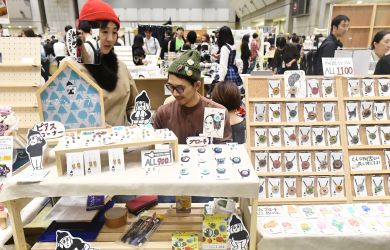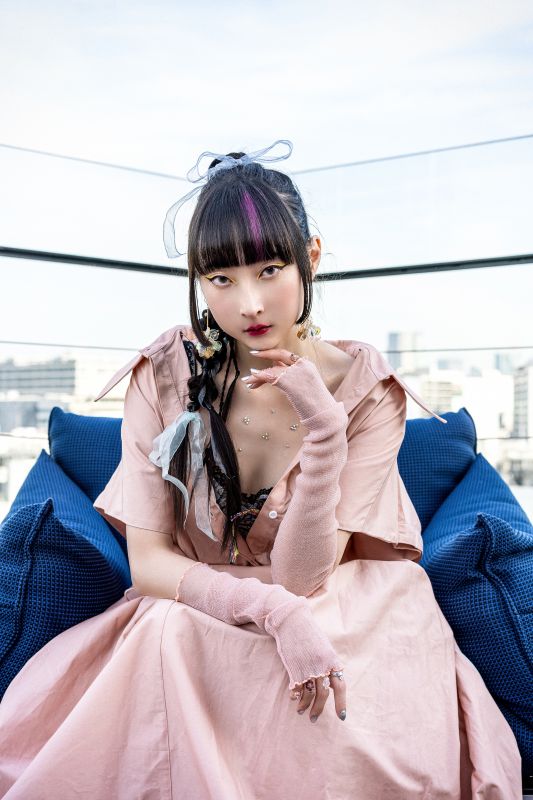
RinRin Doll is more than meets the eye. Originally from L.A. and now based in Tokyo, the Lolita fashion influencer embodies an elevated kawaii style, adding her flair to the elaborate, doll-like aesthetic. Drawing inspiration from high fashion to alternative and gothic scenes, she bridges American and Japanese beauty standards and makes the somewhat eccentric world of Lolita fashion accessible to a broader audience.
From her start in modeling for the popular Lolita fashion brand, Angelic Pretty, RinRin Doll now works across various platforms as a TV host, influencer, YouTuber, jewelry designer and musician. Metropolis sat down with RinRin to explore her journey within this fashion niche.

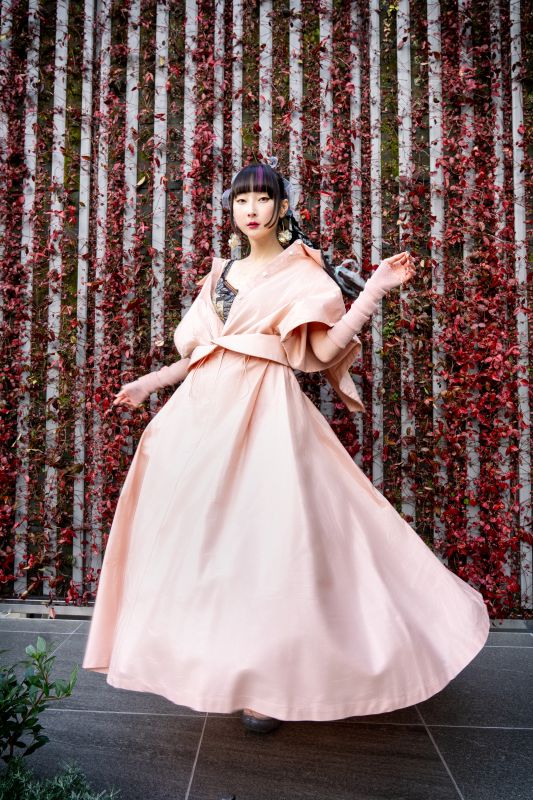
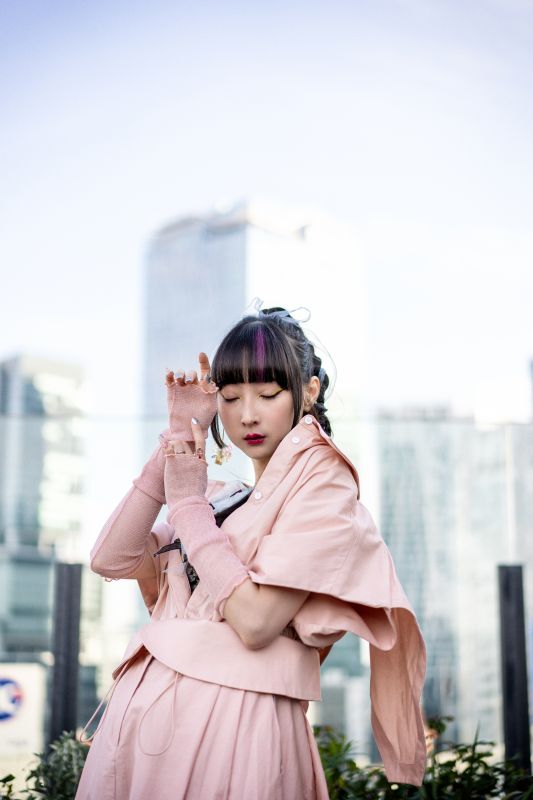
Wardrobe S e i v s o n ® (IG @seivson), HMU honoka. (IG @hnk2711), Photography Mike Smith, Location Gallery 11 Hotel Indigo Tokyo Shibuya
Metropolis: What drew you to Lolita fashion?
RinRin Doll: My introduction to the style was through the Japanese magazine Gothic&Lolita Bible, which was a gift from a friend during their visit to Japan. I remember being struck by how all the models looked and dressed like princesses. This opened me up to a whole new world of fashion, which has always been my creative outlet.
From then on, I began experimenting mostly in black punk fashion. However, when Angelic Pretty came to LA, I had the opportunity to walk as one of their models; and my outfit was a sparkly, head-to-toe pink dress. I still remember the feeling of the fabric, and how the dress swayed when I walked. It was one of those moments when everything just clicked.
M: What was the initial reaction when you first started wearing Lolita dresses?
RinRin Doll: Coming from the States where the sense of style and beauty standards are completely different, I would say that I had mixed reactions. [Laughs] Initially, some of my family was confused as to why I started wearing so much lace and frill. Though my mom would constantly poke fun, she was also my biggest fan, taking pictures of me at every opportunity. My friends were into alternative fashion, so I would say they were all supportive and interested in my exploration of the niche.
M: How did you end up in Japan?
RinRin Doll: After college, I had an opportunity to study abroad. I reached out to Angelic Pretty during this time, not really knowing where it would lead, but things unfolded pretty quickly. I modeled for their catalogs and was encouraged to take part in the street snap culture in Harajuku— the birthplace of the Lolita fashion subculture.
This eventually ended up with me working as a dokusha model (a reader model) for magazines such as KERA and Gothic&Lolita Bible. Modeling for Gothic&Lolita Bible was a full-circle moment and one of the motivators that pushed me to continue on the path as a Lolita fashion model.
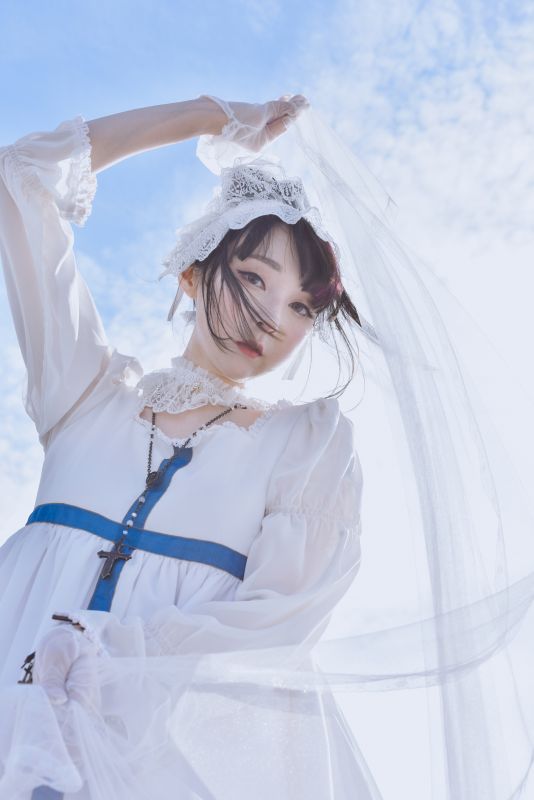
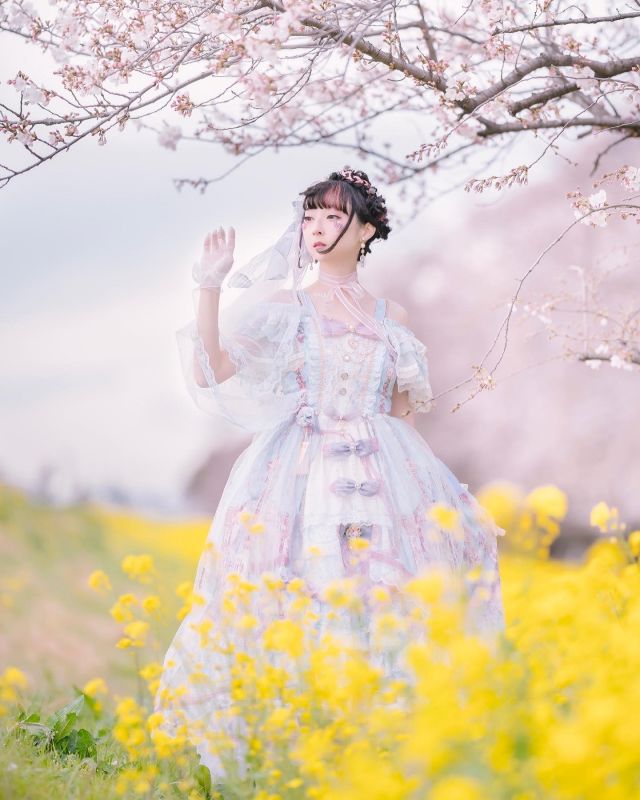
M: Did your view on Lolita fashion change once you came to Japan?
RinRin Doll: I would say my perception of Lolita fashion changed quite dramatically. When I started in L.A., pieces were hard to come by and I had a collector’s mentality. Once you’re in the industry, Lolita fashion becomes an everyday tool to express your style.
Having access to so many dresses and accessories enabled me to explore how I wanted to stand out within the niche. It’s led me to incorporate Western fashion trends with traditional Lolita pieces, merging my different backgrounds, cultures, and inspirations. I’m typically drawn to brands that embrace the punk, new wave, and goth aesthetic, such as Alice Auaa or MIKIO SAKABE.
M: What has the experience of working as a Lolita model in Japan been like?
RinRin Doll: A major takeaway is how flexible you need to be. I remember one of the first jobs I had was creating a six-step fall makeup look on the spot. Choosing from a mountain of makeup, I had to quickly prepare my look and pose for each step, and make sure everything was shot correctly. This experience was a crash course into how crucial communication is when working with magazines. It has also given me a better understanding of content creation, which is a valuable skill when branching out to other platforms such as YouTube and Instagram.
M: Could you share your experience working across multiple platforms?
RinRin Doll: As some subculture magazines ceased to print, social media platforms like Instagram began to rise. This pushed me to start making content of my own, and I enjoyed having more creative control.
My job as a TV host for NHK’s Kawaii International was another perfect fit because
it allowed me to bring Lolita fashion to an international audience. Besides this, I’ve opened Lolita fashion select shops and have recently gotten into creating music. I might seem thinly spread, but everything I do is intended to make the Lolita subculture more accessible and enjoyable for anyone and everyone.
M: What is Lolita fashion to you?
RinRin Doll: A lot of people think that Lolita fashion is attention seeking and about creating looks for a certain shock factor. I’m confident in saying that many people within the subculture would agree with me that it’s just another form of expression. Basically, an ultimate celebration of self. I believe that Lolita fashion celebrates the kawaii in all of us and encourages self-love and confidence.


